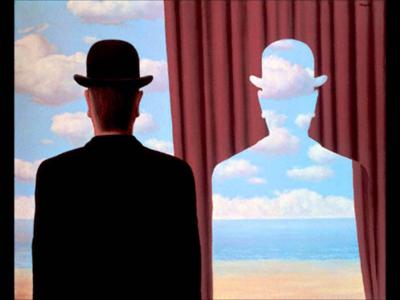Works by René Magritte, Joan Miró, Salvador Dalí, Kay Sage, Herbert Bayer and Roberto Matta, Saturday through Jan. 3, Fine Arts Center, 30 W. Dale St., $12-$18.50, $5 FAC members with free return visits, free ages 12 and younger with guardian; 634-5581, csfinearts center.org.
Something else: "Springs Surreal," works by Kay Williams Johnson, Lorelei Beckstrom, Chris Sedgwick and Aaron Graves, through Feb. 7.
Surrealism is the stuff of fantasy.
The avant-garde 20th-century artistic movement is replete with images straight from the subconscious or a session of dream analysis with psychotherapists Carl Jung or Sigmund Freud.
The Fine Arts Center will present "Collections Surréaliste" with three paintings by René Magritte and works on paper by other well-known European artists, including Joan Miró, Salvador Dalí, Kay Sage, Herbert Bayer and Roberto Matta. It opens Saturday.
A second exhibit, "Springs Surreal," features Magritte-inspired works by local artists. It's open now.
The surrealism movement took root in the years following World War I. Europe was devastated and watching World War II begin to take shape.
"There was a sense among visual artists, poets, literary figures and philosophers that it was in fact rationality that had brought us to the brink of destruction," says Blake Milteer, the FAC's executive museum director and chief curator.
Surrealism consisted of two threads. One dealt with the subconscious and dream analysis. Artists took understood and common objects and scenes and ripped them out of context.
The second thread dived into automatism, in which the artist followed the impulses of his unconscious to choose line, color and structure. This method eventually led to the work of Jackson Pollock, whose paint splatters were not just arbitrary, Milteer says.
"I find it to be one of the most fascinating movements of the 20th century," says Joy Armstrong, a curator at the FAC. "It endured due to the incredible departure of its time. It resonated with people. People could understand it because it was so perplexing. It's an experience we all share - the nature of chance and chaos and seeking to make sense of things that are hard to understand."
Magritte's work was more dreamscape-like and drawn from both his personal experiences, including his mother dying when he was a young child, and watching the world climate develop around him.
"Many of these artists, when the (surrealism) movement was coming to a head, were looking at the political events happening in the world at the time," Armstrong says. "The images are of deliberate rebellion to the atrocities of war and things they were experiencing in the world and the art world at the time."
JENNIFER MULSON, THE GAZETTE, 636-0270, JEN.MULSON@GAZETTE.COM






 Your Privacy Choices
Your Privacy Choices